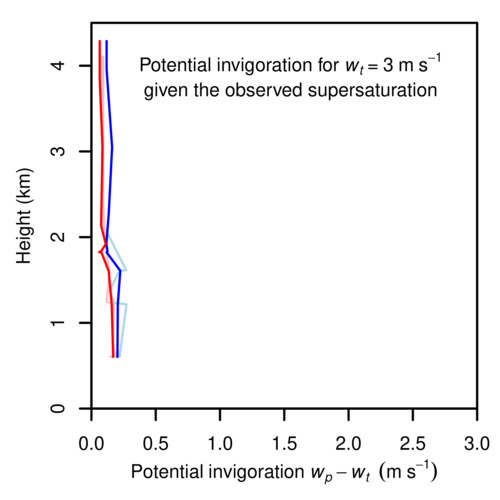Romps, Latimer, Zhu, Jurkat-Witschas, Mahnke, Prabhakaran, Weigel, and Wendisch, Air pollution unable to intensify storms via warm-phase invigoration, GRL, 2023
Errata
References to "1,000 m2 s-2" should have been "500 m2 s-2" and references to "a/rcd" should have been "ar/cd". These have been corrected in the PDF below.
Paper
Description
An actively debated hypothesis is that air pollution from human activities regularly makes storms around the world more intense, with intensity measured, for example, by the speed of storm updrafts. There are three main proposed mechanisms for how aerosols might invigorate storms, one of which is the so-called "warm-phase invigoration mechanism". In this mechanism, extra particles of air pollution (aerosols) make storm updrafts more buoyant and, therefore, faster, with "warm-phase" referring to the lower altitudes where clouds are composed of liquid water (as opposed to ice). But this mechanism requires the water vapor in cloud updrafts to be far out of equilibrium, as measured by the supersaturation (the amount by which the relative humidity exceeds 100%). We show that observed supersaturations in storm clouds over the Amazon are much too low for this mechanism to operate. In other words, the warm-phase mechanism is unlikely to have any practically significant effect on storm intensity.
Vertical profile of the maximum velocity boost that could be generated by air pollution for a 3-m/s updraft with the supersaturation values observed in convecting clouds over the Amazon. The large blank white space is intentional: the x axis ranges from 0 to 3 m/s (the typical speed of the observed updrafts), while the maximum theoretical invigoration is only about 0.2 m/s or less. The two colors correspond to two sets of instruments aboard the aircraft: (blue) CIP+CAS and (red) CIP+CDP. The fainter profiles are calculated only for the days when the air was deemed by the field-campaign scientists to be "clean" or "marine".
